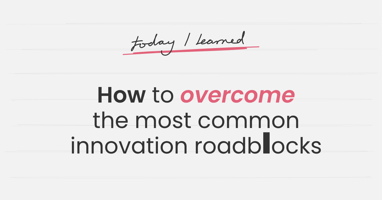Change is here in the form of DISRUPTION and gaining pace as this universe rips itself apart a new one is replacing it and technology is fueling its acceleration.
Growth Strategy firm Innosight recently published a report that announced 50% of the current S&P 500 will not exist in 10 years' time, and that churn rate is increasing. In the ‘60's typical tenure on the S&P for a company was 33 years; by the ‘90s it had dropped to 20 years and is forecast to drop to 14 years by 2026. This is a scary statistic as a lot of well-established organizations that have become institutions — even for what we believe to be behemoth companies — are under threat.
Banking, Automotive, Retail, Infrastructure, Engineering, Chemical, Oil & Gas, Power Generation, even Government … the list goes on. Every organisation must look to the future and address their Innovation Strategy in-line with their Business Strategy or face being replaced.
I recently read an article focusing on one of the aspects of Innovation, Ideation and its formulation, specifically relating to the processes and decision criteria that manage the selection of the “good, bad and the ugly.” The latter we can use to define compliance projects as they consume time and money but have to be done regardless. Innovation is much greater than Ideation alone and to my mind starts with Strategy. It's no longer good enough to sit in one's ivory tower and dictate a 5 year strategy to be one of 50% growth and steer the company in the direction of NPD and acquisition without fully understanding consumers and the highly fluid state of technological change.
Banking Example: Major Disruptor FINTECH We have all seen our needs and habits change in the way we consume our financial management with the advent of digitisation and online banking trends. This relatively small change has ripped open the retail banking market providing easy access for new agile online-only banks, with their new infrastructure and low operating costs. This has left our institutional banks under intense pressure to reduce costs merely to compete.
To succeed, playing catch-up is not an option. We must be dynamic and agile in our response, getting ahead of the competition and addressing the imbalance of the current status quo with effective processes and tools that accommodate the complexity and speed of change. By putting Innovation under the microscope, each of the following should be addressed:
Interested in joining the conversation? Comment below.




